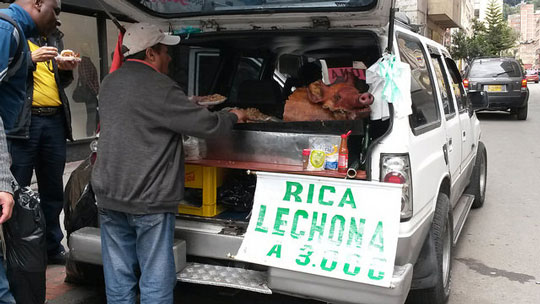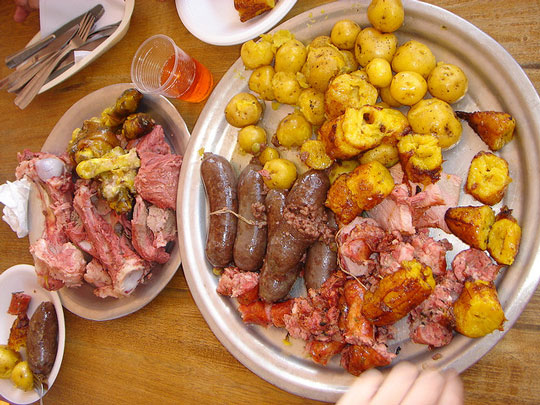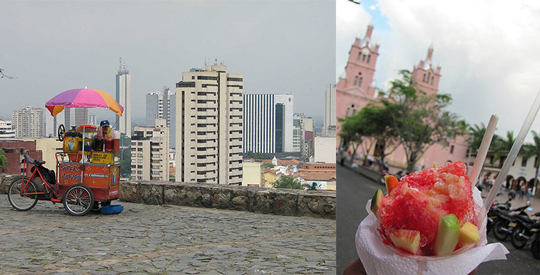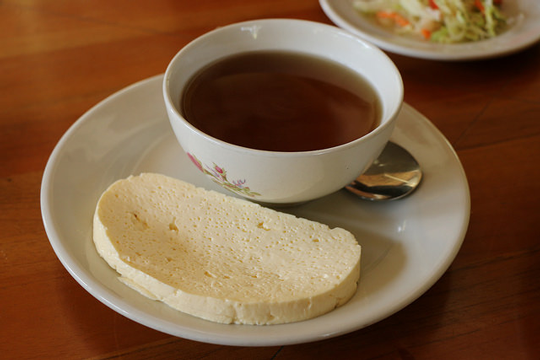
Six “Perfect Moment” Colombian treats you just have to try
Traditional snacks, drinks and dishes are the source of much affection in Colombia, especially those that are associated with life’s happiest rituals. If you’re keen to try the following Colombian treats, make sure you pick the perfect moment.
Lechona
Colombia is a soccer-loving country, so it goes without saying there’s a traditional dish to be eaten the moment you leave the stadium. Lechona means “suckling pig” and it really is a beast of a dish, with the meat extracted from a huge pig then marinated in delicious herbs and spices. The pork is mixed with peas, onions and beef and stuffed right back into the pig skin. That satisfying blend is then served piping hot with an arepa to fans who devour it after a game, regardless whether they have won or lost.
Berraquillo
This is the famous “Bogotá aphrodisiac”, which means we don’t need to tell you the perfect moment to drink this heady beverage (it’s also considered an energy drink and a hangover cure too).
Berraquillo mixes crabmeat and borojo fruit with numerous other ingredients including cola, chocolate, wine, whisky, honey and milk, depending where you buy it. Berraquillo is a stalwart of market places across the capital, although it’s best left to those with a strong stomach… and an even stronger appetite.
Fritanga
Fritanga is the dish of choice for many a hungry sportsman, particularly when they’ve just finished playing either of Colombia’s most beloved pastimes, tejo and rana. Tejo is a team game that involves hurling a metal disk at a gunpowder-laced target, whereas rana is a table game, with players attempting to throw chips into a hole resembling a frog’s mouth. Sports venues traditionally serve a post-match fritanga, a plate piled high with treats that normally includes pork, chorizo, blood sausage, potatoes and plantain. (You may also enjoy: Colombia’s most beloved sports: Tejo and chaza)
Cholado/Raspao
Bogota’s ciclovía, where roads are closed for running, cycling, roller-blading and dog walking every Sunday, is gaining worldwide recognition, which naturally means it deserves a snack of its own. Raspao or cholado/cholao is a fruit salad, usually pineapple, apple, coconut, papaya, strawberry and kiwi, drenched in condensed milk and syrup and mixed with shaved ice (hielo raspado in Spanish) that makes for the perfect ciclovía pit-stop. It originated in the Valle de Cauca, where it’s the treat of choice in the sunshine too, sometimes with the fruit omitted.
Aguadepanela and cheese
Few culinary delights are more quintessentially bogotano than aguadepanela con queso. Aguadepanela or aguapanela is an infusion drink made by dissolving unrefined whole cane sugar (panela) in boiling water, which is then served with a slab of Colombia’s softest cheese.
The drink has near legendary status for its supposed ability to cure common ailments, including colds and flu, and its energizing powers that make it ideal for coping with the capital’s 2,600m altitude or recovering after exercise. The perfect moment to order aguadepanela con queso is when you reach the top of Monserrate mountain, especially if you climbed, rather than taking the cable car. (You may also enjoy: 5 Colombian grandmother remedies you will be offered)
Fruit infusions
Colombians have a huge fondness for aromática, a fresh fruit infusion that has medicinal benefits as well as being a hot, tasty and comforting beverage. How to make an infusion? A typical aromatica might involve sliced strawberry, blackberry, passion fruit, kiwi, guava and pineapple, left to stand in near-boiling water until the water takes on the flavors of the fruit. Many aromatica fans, particularly in Bogota, opt for the drink when they are leaving evening Mass. It’s the perfect moment to prepare yourself to face the chilly air. (You may also enjoy: Colombia’s 10 most exotic fruits)
Photo: Wikimedia
Looking for the perfect moment to taste a traditional treat? Live this experience in Colombia. If you liked this article please feel free to share it on Facebook, Twitter, LinkedIn, Google+ or any of your social networks.
 Welcome, you are in
Welcome, you are in 








